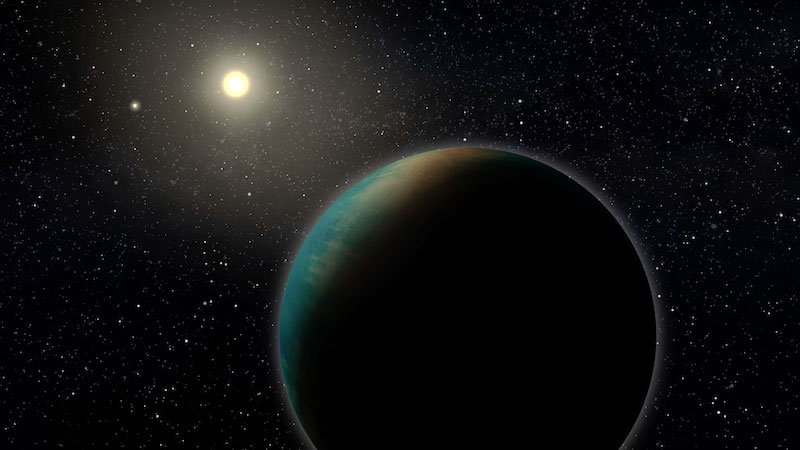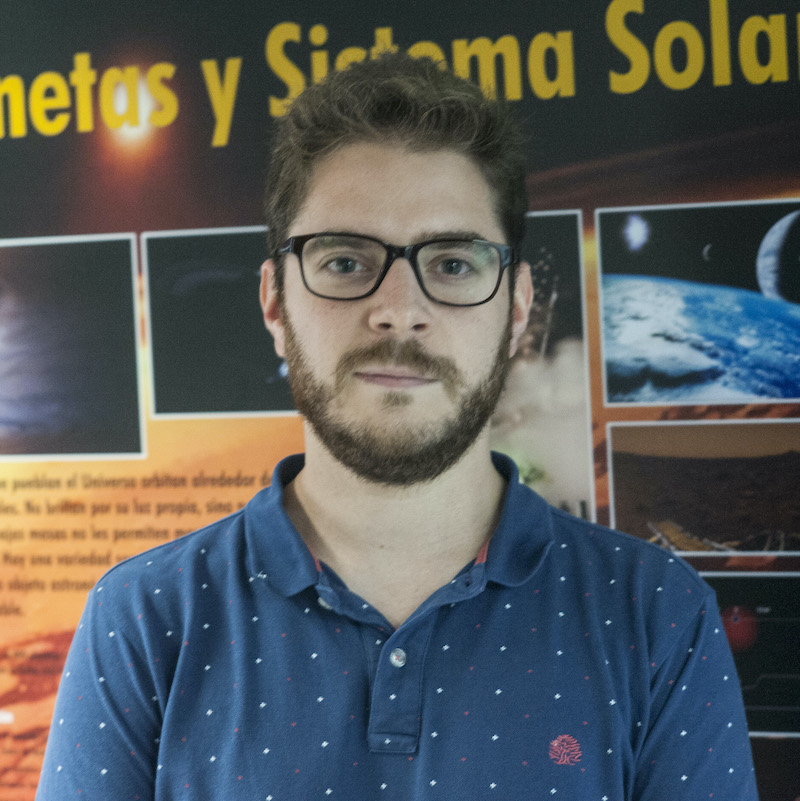
Earth is a water world, with its vast oceans, lakes and rivers. Elsewhere in our solar system, there are other bodies that have subsurface water oceans, including Jupiter’s moon Europa and Saturn’s moon Enceladus. But are there water worlds outside our solar system? Growing evidence suggests it’s likely. In fact, a new study from researchers at the University of Chicago says that water worlds – at least one type of them – might be common around red dwarf stars. Most of that water is probably underground, however. The researchers published their peer-reviewed findings in the journal Science on September 8, 2022.
Water worlds orbiting red dwarfs
The new study focuses on red dwarf stars, the most common type of star in our galaxy. Many of the exoplanets – planets outside our own solar system – that astronomers have discovered so far orbit red dwarf stars. The researchers wanted to look at the populations of planets that orbit these stars. These worlds include rocky, water-rich and gas-rich planets. Their examination suggests water worlds are likely common among those planets. Rafael Luque, lead author of the new study, said in UChicago News:
It was a surprise to see evidence for so many water worlds orbiting the most common type of star in the galaxy. It has enormous consequences for the search for habitable planets.
2 different observation techniques
The researchers found clues regarding the planets’ size and mass by combining two different observation techniques. One is called the transit method, based on a planet crossing in front of its star, as seen from our vantage point on Earth. The other is the radial velocity method, where a very small gravitational tug of a planet on a star is measured by a telescope. By combining the results, scientists get a better idea of how large and massive the planets are. Co-author Enric Pallé of the Institute of Astrophysics of the Canary Islands and the University of La Laguna, said:
The two different ways to discover planets each give you different information.
Half rock and half ice
Scientists assumed that most of these planets would be rocky, like Earth. And they are … Kind of. The results, however, suggest that they are probably more like half rock and half water. This is because the measured densities of the planets indicate that are too light to be pure rock. As Jacob Bean at the University of Chicago said:
I was shocked when I saw this analysis. I and a lot of people in the field assumed these were all dry, rocky planets.
There is a catch though. The findings suggest that while the planets contain a lot of water, it is most likely mixed in with the rock, or in subsurface pockets, instead of sloshing around on the surface. Why? Because these particular planets orbit very close to their stars. Any surface water, if it didn’t just boil away, would exist in a supercritical gaseous phase. In that case, this would make the apparent radius of the planet look larger. But that is not what astronomers have observed. As Luque noted:
But we don’t see that in the samples. That suggests the water is not in the form of surface ocean.
Europa-like water worlds?
If this scenario is true, and these planets have most or all of their water underground, that may make them more like Europa or other ocean moons in our solar system. On those moons, the liquid water is below a surface crust of ice, but the analogy is similar. For Europa specifically, there is not only the underground ocean, but also growing evidence for pockets of water – lakes if you will – within the ice crust itself.

Exoplanet formation
The findings also have implications for how planets form. They support the theory that many planets actually form farther out from their stars and then gradually migrate inwards. These once colder planets could then eventually reside in the region closer around their star where liquid water would be possible. As noted in the paper:
Formation models that include orbital migration can explain the observations: Rocky planets form within the snow line, whereas water-rich worlds form outside it and later migrate inward.

Other water worlds
In another study from July 2022, scientists said that super-Earth exoplanets with thick primordial atmospheres could also be potentially habitable water worlds.
Last month (August 2022), scientists announced the discovery of a super-Earth exoplanet 100 light-years away that may be completely covered by water. From the studies and discoveries being made, it would seem that there may be a wide variety of water worlds out there in our galaxy. An exciting prospect!
Bottom line: Scientists at the University of Chicago say that rocky water worlds are likely common around red dwarf stars. Most of that water is probably underground, however, not on the surface as oceans.
Source: Density, not radius, separates rocky and water-rich small planets orbiting M dwarf stars











